
I got the idea from the Bankable Bookcase plans on this site, but modified it to closer resemble the closed top version that I found on the Land of Nod website. I think the resemblence is good, and at a fraction of the price. This is my first plan using Google Sketchup...they should get better...I added trim all the way around the top and the bottom of mine, if you follow the plans, the trim will only be on the front and you will be able to bank multiple cases together, if you trim out the sides of the top and bottom, they are better suited as stand-alone book cases.
Preparation
1 Sheet 4x8 Hardwood Plywood (I used Lowe's Blondewood)
1 8ft. 1x2
11ft. 2 3/4" trim (I used Colonial)
8ft. 1 3/4" trim (I used Colonial)
Hardwood edge banding (if you want to stain)
2- 15" x 60" plywood (sides)
4- 14" x 28" plywwod (shelves/bottom)
1- 15" x 29 1/2" plywood (top)
1- 7 3/4" x 28" plywood, top cut with a jigsaw for the offset look (front)
1- 1x2 @ 28" (Back support)
8- 3/4" x 3/4" x 14" (cut 1x2's in 4- 14" sections, then split them on the table saw) (shelf supports)
3- 28" of the 1 3/4" colonial trim (shelf trim)
2- 31" with 45 degree mitered ends of the 2 3/4 colonial trim (top and bottom rim)
4- 15 3/4" with 45 degree mitered ends of the 2 3/4" colonial trim (top and bottom side trim)
Please read through the entire plan and all comments before beginning this project. It is also advisable to review the Getting Started Section. Take all necessary precautions to build safely and smartly. Work on a clean level surface, free of imperfections or debris. Always use straight boards. Check for square after each step. Always predrill holes before attaching with screws. Use glue with finish nails for a stronger hold. Wipe excess glue off bare wood for stained projects, as dried glue will not take stain. Be safe, have fun, and ask for help if you need it. Good luck!
Instructions
Step 1
Start by attaching the shelf supports to the sides of the bookcase. *All of the supports are attached 3/4" from the fronts of the sides. The bottom of the bottom support is 1/4" from the bottom of the side. The next support is 18" from the bottom of the side. The next 2 supports are 14" from the bottom of the previous support. I found it easier to measure and draw all of the lines, then countersink holes(3 on each support), then glue and screw all of the supports to the sides at the same time. Do this for both sides.
*Remember the other side will mirror this side, it will not be exactly the same.
Step 2
Step 3
Step 8
Attach the top and bottom trim with a finish nailer, glue, and clamps.
Wipe off any excess glue.
If you only trim out the front of the unit, you will able to bank the bookcases together if you make multiple units.
If you wish to create a stand-alone unit, you can trim out the sides of the top and bottom as well, you just have to cut the trim accordingly atth a 45 degree miter on a miter saw.
It is always recommended to apply a test coat on a hidden area or scrap piece to ensure color evenness and adhesion. Use primer or wood conditioner as needed.
Minwax Polyshades Antique Walnut, 3 coats, sanded with 0000 steel wool inbetween coats.


















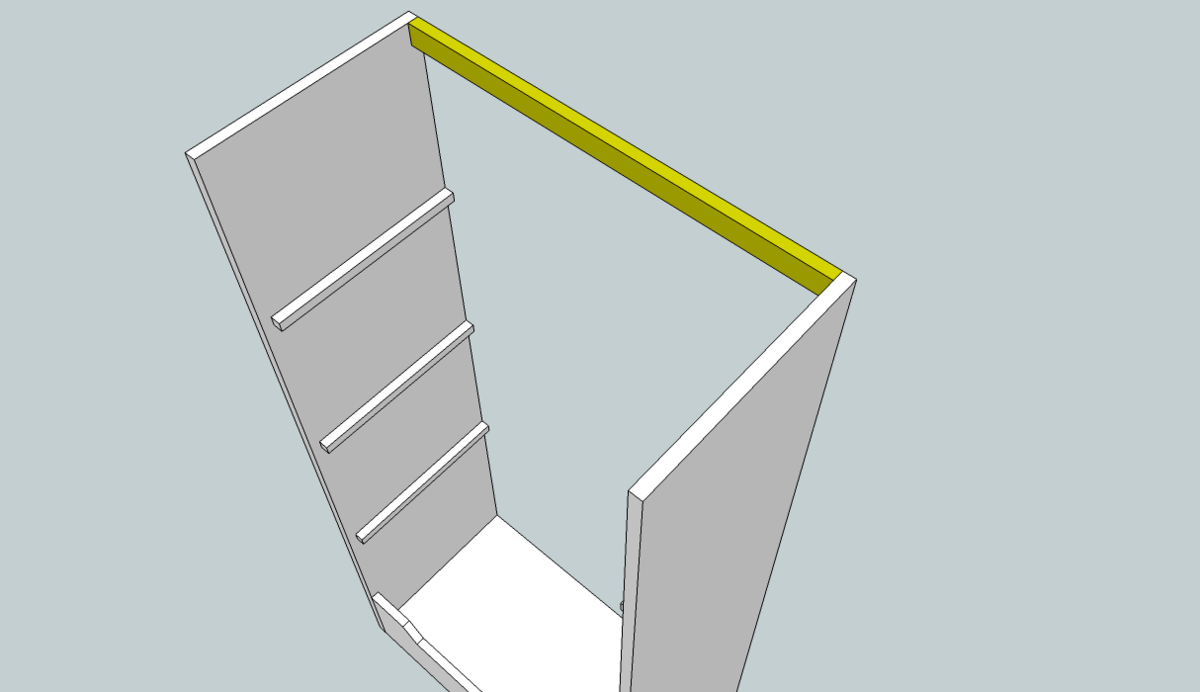
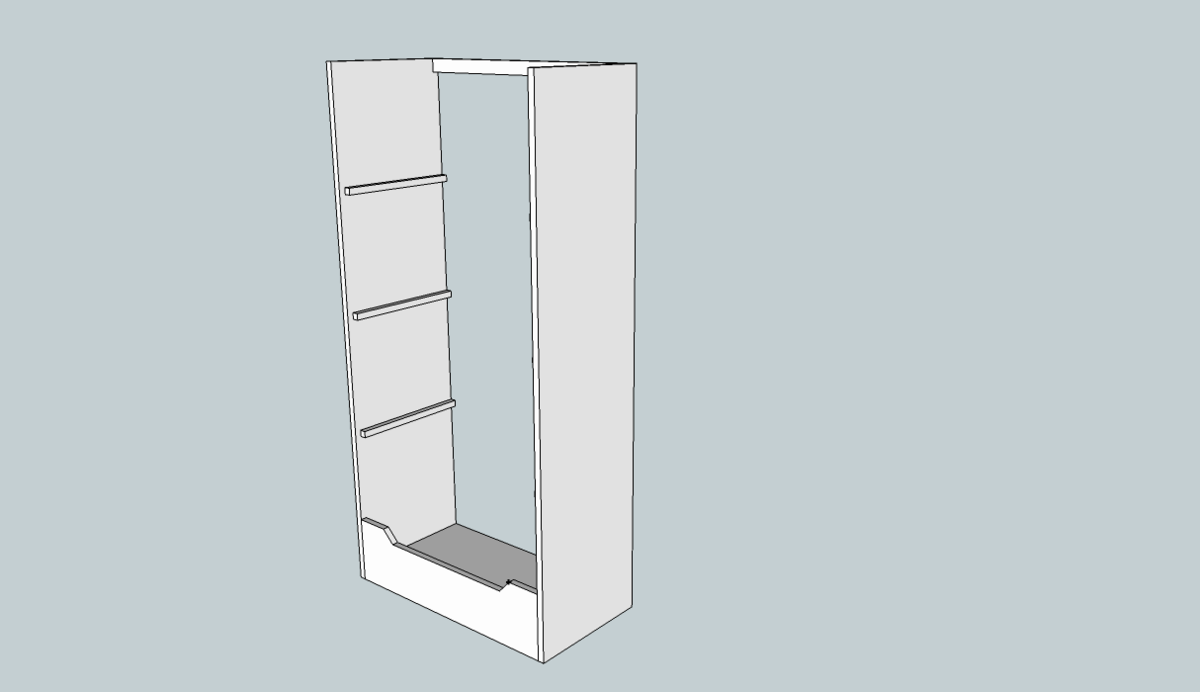
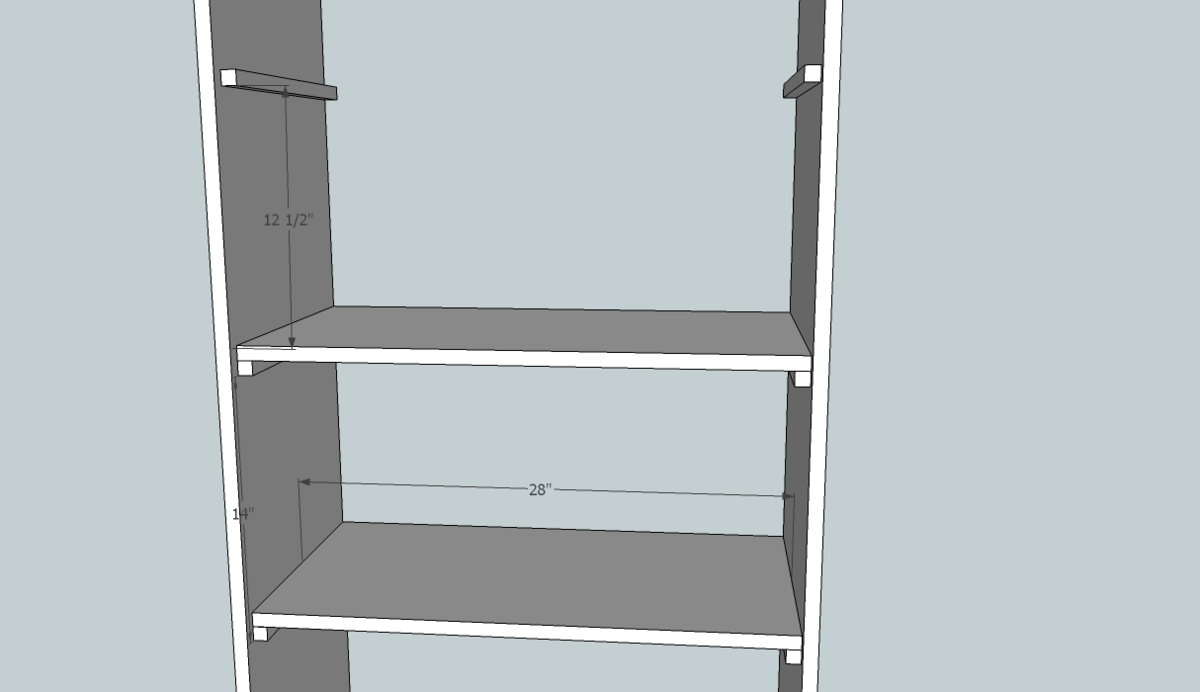
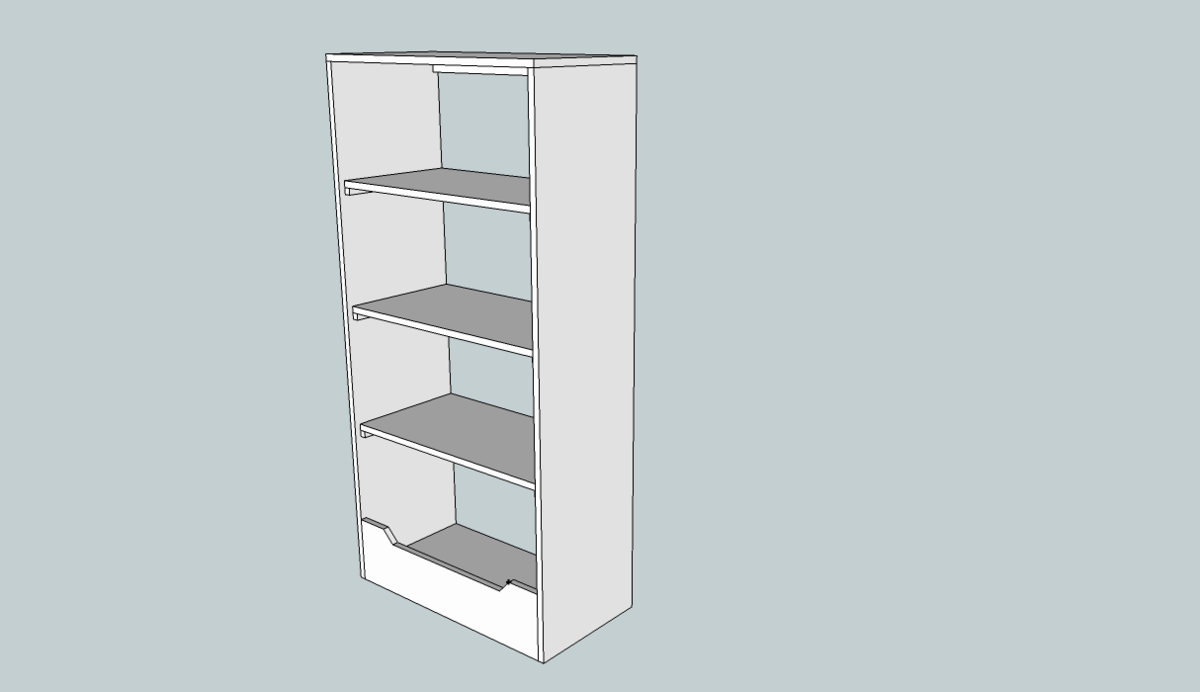

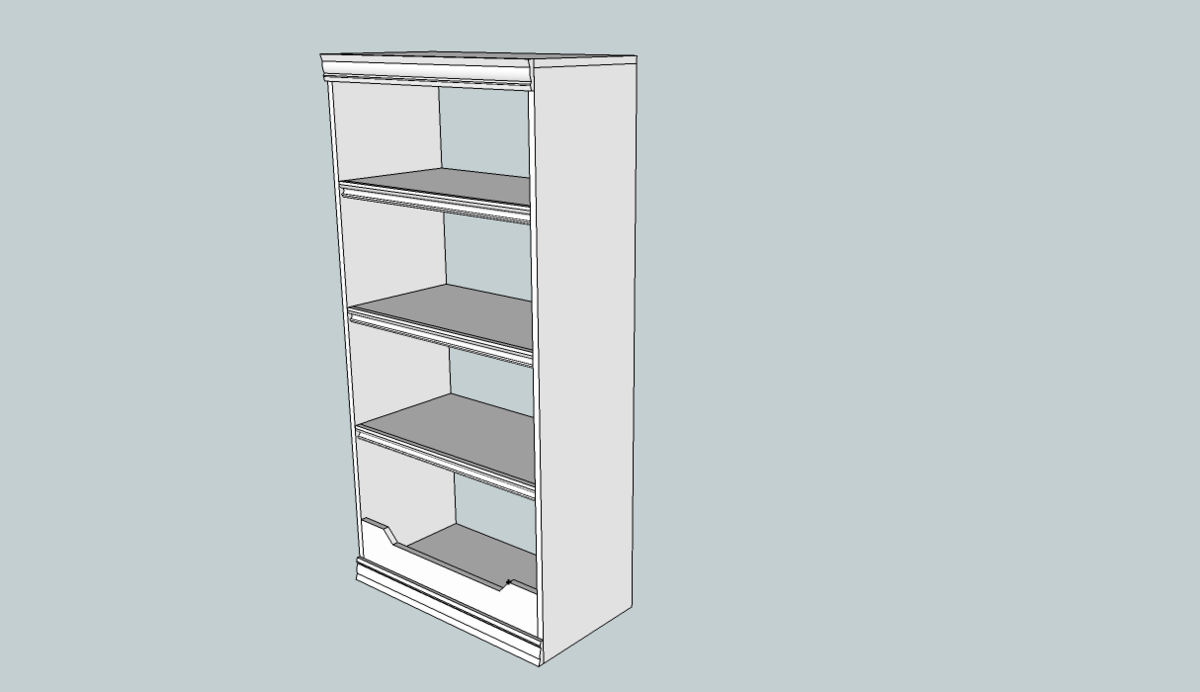


Comments
ana8178
Sun, 01/22/2012 - 10:05
Thank you!
I asked you about your plan under guest when I saw it and loved it!! Thank you so much for the plan, this is my next project! I will post pics on here when I'm through.
ana8178
Sun, 01/22/2012 - 10:55
I do have to ask a newbie
I do have to ask a newbie question, why sand between the stain? Is that a necessary step?
Chef Sowa
Sun, 01/22/2012 - 18:10
Sanding
The minwax polyshades are a 1 step stain and polyurethane sealer. Sanding with the wool gives the next coat something to hold on to, as you don't wipe it off, it's pretty much treated like paint. Plus it cuts down any bubbles that may have gone unnoticed.
nicholaix
Tue, 12/31/2013 - 15:14
what? No pocket holes?
Is there a reason you didn't use them in this project? They look fab and I want to make some up this weekend for my hoarder sons.